NVIDIA Tegra Note 7 Review
by Brian Klug on November 12, 2013 9:01 AM EST- Posted in
- Tablets
- Mobile
- Tegra 4
- NVIDIA
- Tegra Note
Battery Life
Battery life is still a big concern for mobile devices, and remains a regular emphasis in our reviews. The Tegra Note 7 ships with a 15.17 watt hour battery, essentially par for the course in the 7-inch tablet space it occupies. As a reminder, Tegra 4 consists of 5 ARM Cortex A15s, 4 synthesized for performance, 1 shadow or “energy saver” core synthesized for lower power and lower frequency. In the case of the Tegra 4 SoC inside Tegra Note, the shadow core seems to work up to a frequency of 696 MHz. The Tegra Note 7 includes an interesting setting which allows one to configure between a high performance, balance, and power saver mode. I’ve been begging OEMs for something like this for a while now, with granular control of the governor for CPU and other power/performance settings without the need for root. Right in the settings shade there’s a shortcut to these settings, with balance selected as default.
Major kudos to NVIDIA for shipping something so close to what I’ve been asking for, something which by the way is the long term solution to the “performance mode” CPU optimizations we’ve been talking about for so long now, which the Tegra Note does not exhibit any symptoms of having. Balance doesn’t limit frequency and sets the max number of cores to 4, save battery sets the maximum number of cores to 2 and a frequency limit of 1.8 GHz (which oddly enough already is the limit of this platform) along with an app FPS limit of 30. I didn’t notice any change with maximize performance selected, and oddly enough the 60 FPS limit due to vsync remained in place.
We’ll start with our typical WiFi web browsing battery life test. Here we see a good combination of regular spikes in CPU usage with idle time, hopefully simulating constant, reasonably paced usage. As always the display is set to exactly 200 nits and configured the same way we always configure devices for maximum consistency.
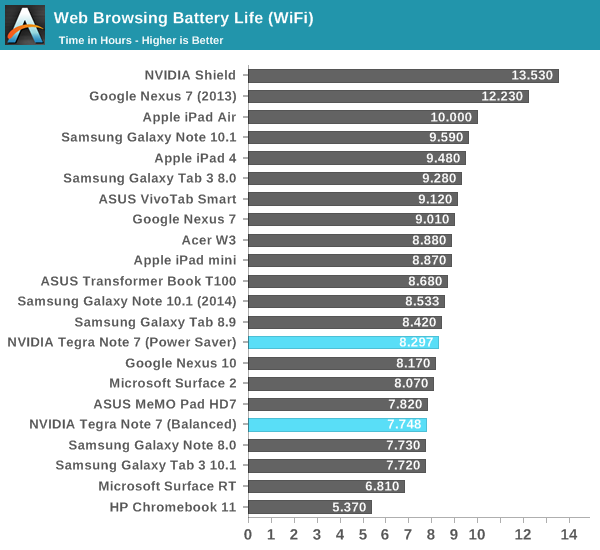
I tested the WiFi browsing battery life in both the power saver and balanced mode since the web browsing test has a good CPU workload mix that would flesh out a difference. There ends up being a 7 percent difference in battery life between the two here. I suspect NVIDIA could set the CPU maximum frequency a bit lower without trading off much real world performance, although the big consumer really is display. Unfortunately compared to the Nexus 7 (2013) the Tegra Note lasts quite a bit less on battery.
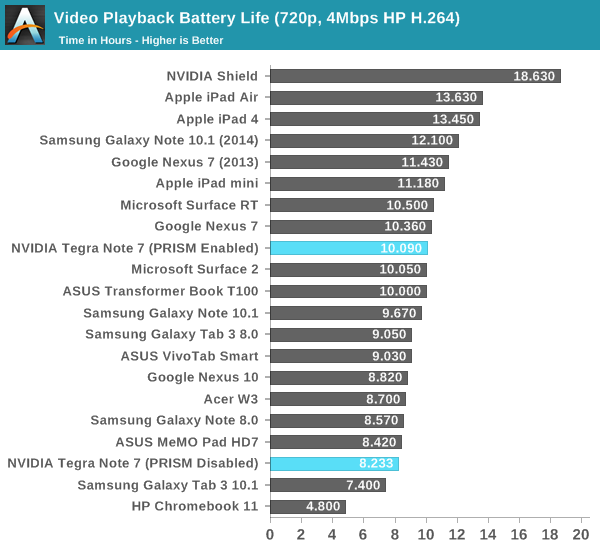
Our video playback test is unchanged and consists of a 720p H.264 high profile Blu-ray transcode played over and over. Here the Tegra Note surprisingly enough also isn’t able to push out much further, in spite of a workload that should pretty much be entirely shadow core (the +1 energy saver core) and video decode dominated. The fact that WiFi web browsing and video playback times are so close together makes me suspect the majority contributor to battery drain in the Tegra Note is display.
Update: I originally tested video playback with NVIDIA's PRISM dynamic backlight feature disabled since this was turned off for display testing. With it enabled and the display set again to 200 nits the Tegra Note is able to almost precisely nail the 10 hour video playback time that NVIDIA claimed, a much better result.
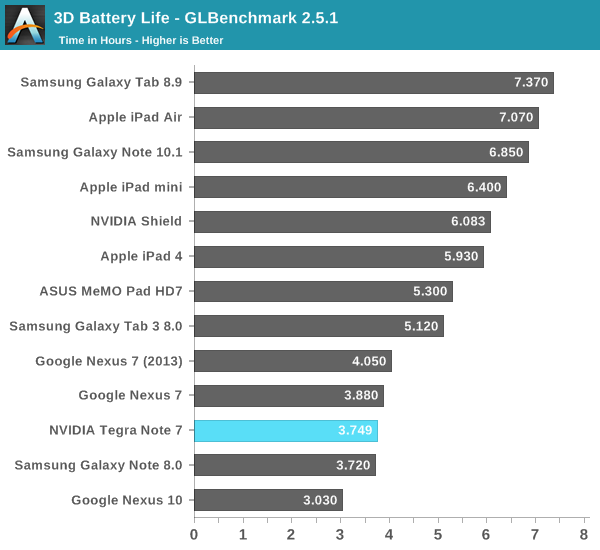
I also ran the Tegra Note through our 3D battery life test which is a part of GLBenchmark. Here the Tegra Note performs very close to the current and previous generation Nexus 7.
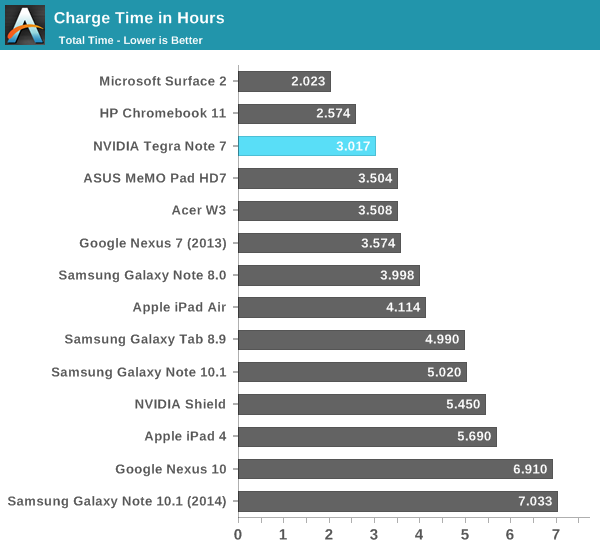
Finally I tested charge time on the Tegra Note, which utilizes the same charging signaling and charger as Shield. Tegra Note is able to draw up to 2 A from compatible chargers during the fast charge part of the charge cycle. I noticed the same charge curve and behavior, and charging on the Tegra Note ends up being very quick at just over 3 hours from a completely drained state to fully charged.


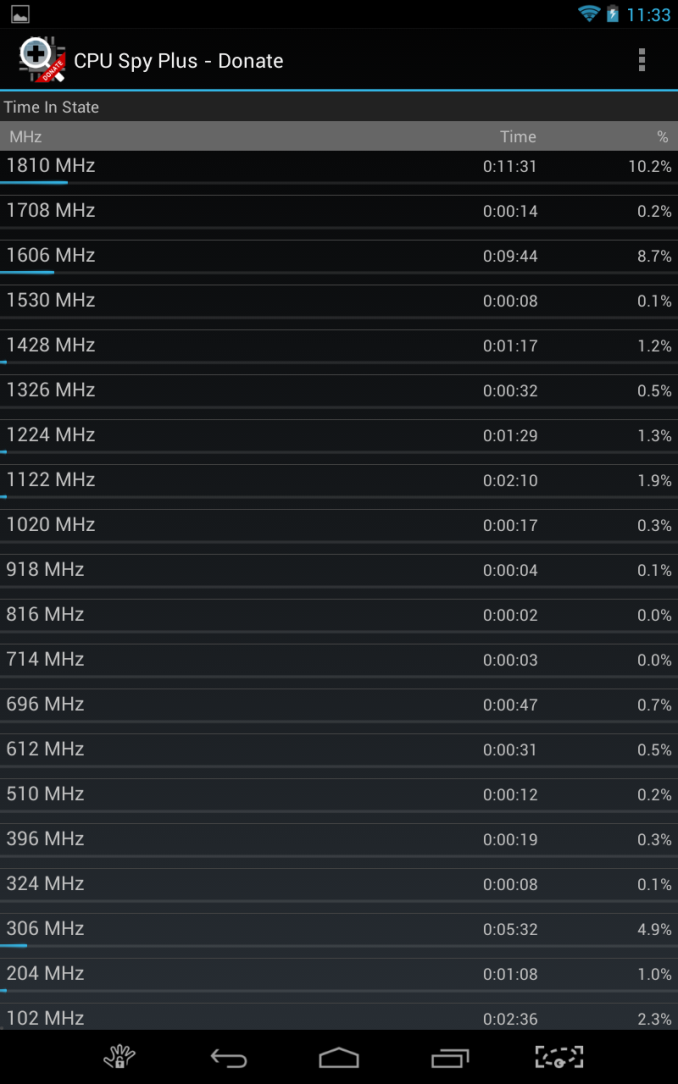
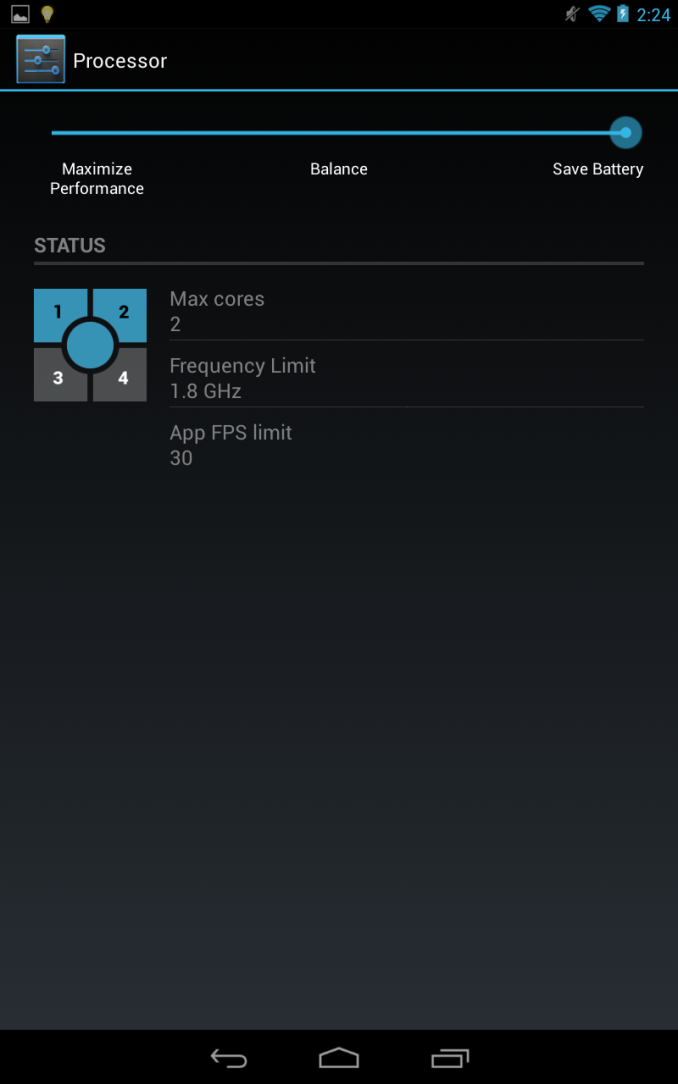








87 Comments
View All Comments
ddriver - Tuesday, November 12, 2013 - link
Blame Java for that, it is one of the worst programming languages in terms of memory efficiency. And naturally, the lousy developers... heck, the skHype on my PC right now consumes 102 MB of ram, I'd say any developer who produces a simple messaging app that takes 100 mbs of ram idling should be fired out of a cannon into the sun.Dribble - Tuesday, November 12, 2013 - link
nexus 5, 7 have 2GB, some android tablets now have 3GB.iPad/iPhone handle less ram better but that's because they don't really multi task, and even then they don't have enough - e.g. browsing web have a load of tabs open and it'll keep reloading pages if you switch between them loosing anything you had done in them. I wouldn't buy an iPad with 1GB either.
BallGum - Tuesday, November 12, 2013 - link
I would say wait for the Nexus 10 2013.It has a larger screen, that much we know for sure.
A potential leak occurred a short while ago which I have detailed over at my blog here: http://theballofgum.blogspot.co.uk/2013/10/nexus-1...
I hope that information helps,
BallGum
ChanduG - Wednesday, November 13, 2013 - link
1080P needs 2GB RAM otherwise you won't need 2GB.ESC2000 - Wednesday, December 25, 2013 - link
Agree about the RAM.... really too bad esp RAM is crucial on Android. Course I don't need another tablet anyway bc I bought the nexus 7 2013 in July and got the Dell venue pro 8 in the awesome microsoft sale a few weeks back.lever_age - Tuesday, November 12, 2013 - link
I don't really follow the tablet market. Is there anything with a similar price with similar GPU performance? Seems like it makes a strong case for the price as a gaming device, but do people actually play those 3D games on Android? I mean... touchscreen lag, controls... I don't even want to get started. You can use a controller, but that kills the portability unless maybe we're talking Shield.TraderHorn - Tuesday, November 12, 2013 - link
Your 3d Mark physics score for the Asus T100 appears to be incorrect. I noticed the same thing in the initial review ofthe Asus T100. The number seems to mixed up with the graphics score.kdr9hu5 - Tuesday, November 12, 2013 - link
And I stopped reading after the bit about the display resolution... For $30 just get the Nexus 7.Pirks - Tuesday, November 12, 2013 - link
Tegra Note pwns Nexus 7 in game framerates, and it will pwn even next version of Nexus 7 judging by how poor Nexus 7 GPU showed off in on-screen benchmarks. If you are after gaming tablet, Tegra Note is light years ahead of competition right now.lmcd - Tuesday, November 12, 2013 - link
On-screen means that the T4 was doing 2/3 or less of the work.